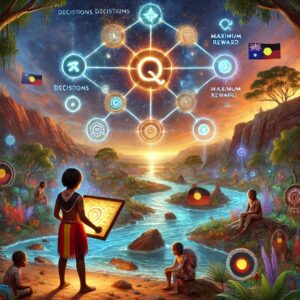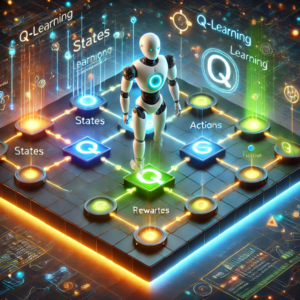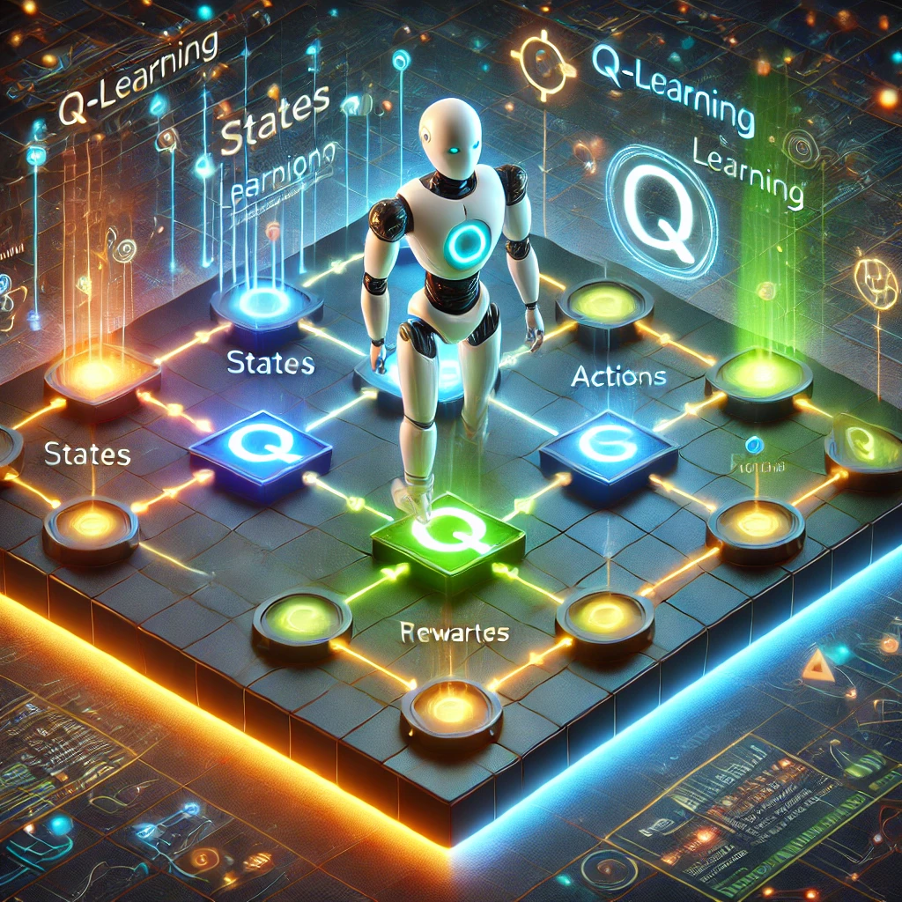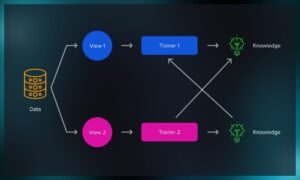A Brief History of This Tool: Who Developed It?
Q-Learning, a groundbreaking reinforcement learning algorithm, was introduced by Chris Watkins in 1989 during his PhD research. This tool revolutionised decision-making systems, making it possible to learn optimal strategies without requiring a model of the environment.


What Is It?
Think of Q-Learning as a treasure map. Each step represents a decision, with the algorithm learning from each action’s consequence to find the shortest path to the treasure—a maximum reward. The “Q” in Q-Learning stands for Quality, as it evaluates the quality of each action in a given state.
Why Is It Being Used? What Challenges Are Being Addressed?
Q-Learning is widely used because it tackles the following challenges:
- Model-Free Learning: It doesn’t require a predefined model of the environment, making it versatile.
- Optimal Decision-Making: The algorithm discovers the best policy for maximising rewards over time.
- Scalability: Suitable for complex systems with numerous states and actions.
How Is It Being Used?
Q-Learning follows these steps:
- Initialise Q-Table: Set up a table to store Q-values for each state-action pair.
- Choose Action: Use an ε-greedy policy to balance exploration and exploitation.
- Observe Reward and Next State: Execute the action, observe the reward, and move to the next state.
- Update Q-Value: Apply the Q-Learning update rule.
- Iterate Until Convergence: Repeat until the Q-values stabilise, reflecting the optimal policy.
Different Types
Q-Learning has several notable variations:
- Deep Q-Learning: Combines Q-Learning with neural networks to handle large state spaces.
- Double Q-Learning: Reduces overestimation bias by using two Q-tables or networks.
Different Features
Key features of Q-Learning include:
- Exploration vs. Exploitation Balance: Ensures the agent explores new possibilities while improving known strategies.
- Guaranteed Convergence: If the learning rate decreases appropriately, Q-Learning guarantees convergence to the optimal policy.
Different Software and Tools for Q-Learning
Developers can implement Q-Learning using the following tools:
- OpenAI Gym: Provides simulated environments for Q-Learning experiments.
- TensorFlow and PyTorch: Support implementing Q-Learning algorithms with ease.
- MATLAB RL Toolbox: Offers pre-built functions for Q-Learning and advanced reinforcement learning.
3 Industry Application Examples in Australian Governmental Agencies
- Australian Energy Market Operator (AEMO):
- Use Case: Optimising energy grid operations through demand-response strategies.
- Impact: Reduced operational costs by 10%.
- Australian Taxation Office (ATO):
- Use Case: Enhancing fraud detection by learning patterns of suspicious behaviour.
- Impact: Improved detection rates by 15%.
- Public Transport Authority of Western Australia:
- Use Case: Scheduling train services to minimise delays and congestion.
- Impact: Increased punctuality by 20%.








